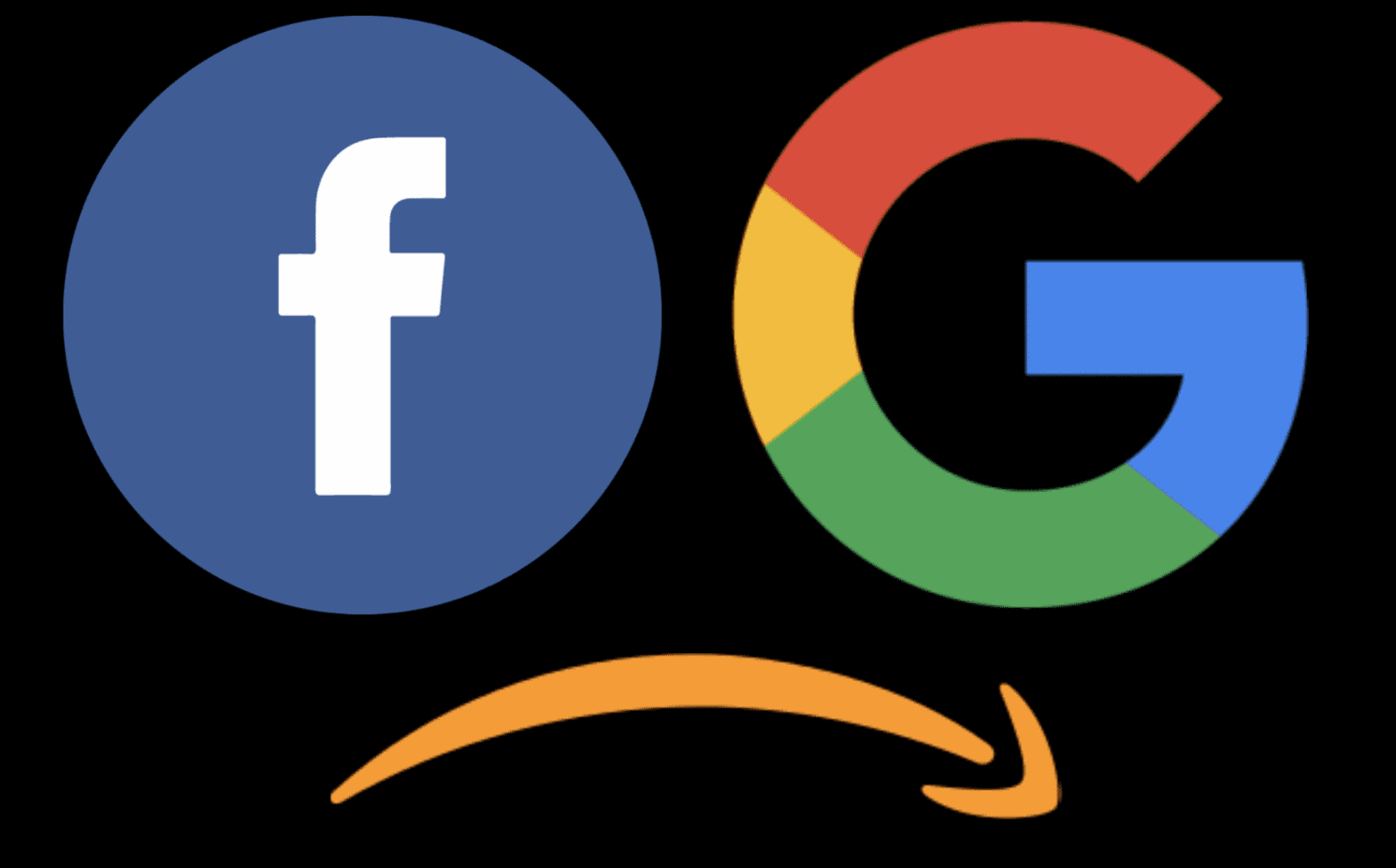The race to lead the online advertising market is getting tighter. According to a new report from eMarketer, Amazon Advertising and Facebook are catching up to Google’s share of the online advertising market. Let’s take a closer look.
What eMarketer Reported
eMarketer says that in 2020:
- Amazon’s share of the online advertising market increased from 7.8 percent in 2019 to 10 percent in 2020.
- Facebook’s share increased from 23.6 percent to 25.2 percent.
- Google’s leading share dropped from 31.6 percent to 28.9 percent.
To put this data in perspective, eMarketer says Google’s share of online advertising was 38.6 percent in 2017.
What Does the Marketer Data Mean?
- Amazon Advertising is only going to get bigger. That’s because Amazon delivers advertisers insight on its vast customer base – and not just casual searchers, but people searching with intent and making purchases. Per eMarketer, Amazon is enjoying growth across the board — search revenues from Sponsored Products and Sponsored Brands, and video ad revenues on properties including Amazon Fire TV, Twitch, and IMDb TV. It’s worth noting that Amazon’s growth is coming not just from ads on Amazon.com but from the Amazon network, as noted (e.g., Twitch and IMDb). That means Amazon is figuring how to use data about its customer base to expand its ad services across the web. In addition, as we noted on our blog recently, Google’s crackdown on third-party cookies is favorable to companies such as Amazon that know how to sell ads based on their massive inventories of first-party cookie data.
- Facebook and Google are doing just fine. Despite Google’s drop in market share, the company generated a whopping $147 billion in ad revenue in 2020. Google saw a dip in its ad revenue in 2020 because its travel advertisers were hit hard by COVID-19, but the company came roaring back in the back half of the year. Google’s ad revenue actually increased by 9 percent year over year. The decrease in Google’s market share may actually help the company combat multiple anti-trust lawsuits at the state and federal level. Meanwhile, Facebook continues to reap the benefits of being the world’s largest and dominant social media network. Despite numerous controversies, Facebook enjoyed advertising growth in 2020. An increase in its user base has played an important role. That growth spiked owing to the massive uptake of social media that occurred during COVID-19, but Facebook’s user base has been climbing for years. Simply put: there is a disconnect between news media criticisms of Facebook and the behavior of its user base.
What Advertisers Should Do
- First, follow your audience. Make your advertising investments based on the journey your own customers are making. Most customers rely on multiple digital touchpoints on their way from awareness to purchase. It’s likely that no single ad platform will (or should) dominate your spend. Incorporating Amazon, Facebook, and Google into your ad spend is probably not going to be an either/or choice (more about that on our blog).
- Do your homework. The ad giants are going to launch more ad tools as the market place becomes more competitive. Amazon recently launched Amazon Live, which makes it possible for retailers to use livestreams to sell products – part of the live commerce trend we blogged about recently. In addition, up-and-comers such as Walmart Connect and Macy’s will launch more ad products as they capitalize on their own first-party data to generate more ad revenue.
Contact True Interactive
At True Interactive, we’ve been helping businesses succeed through online advertising for many years. Our services span Google, Facebook, Amazon Advertising, and much more. Contact us to learn how we can help you.
